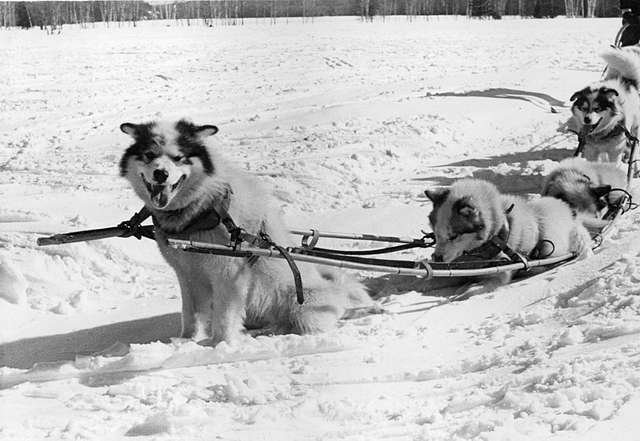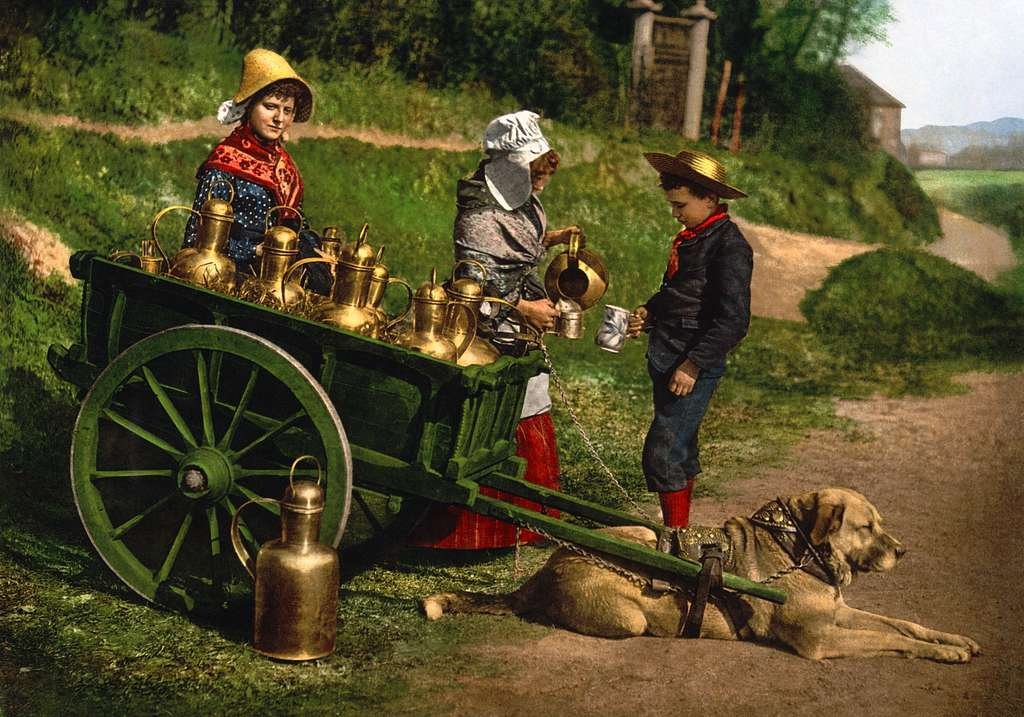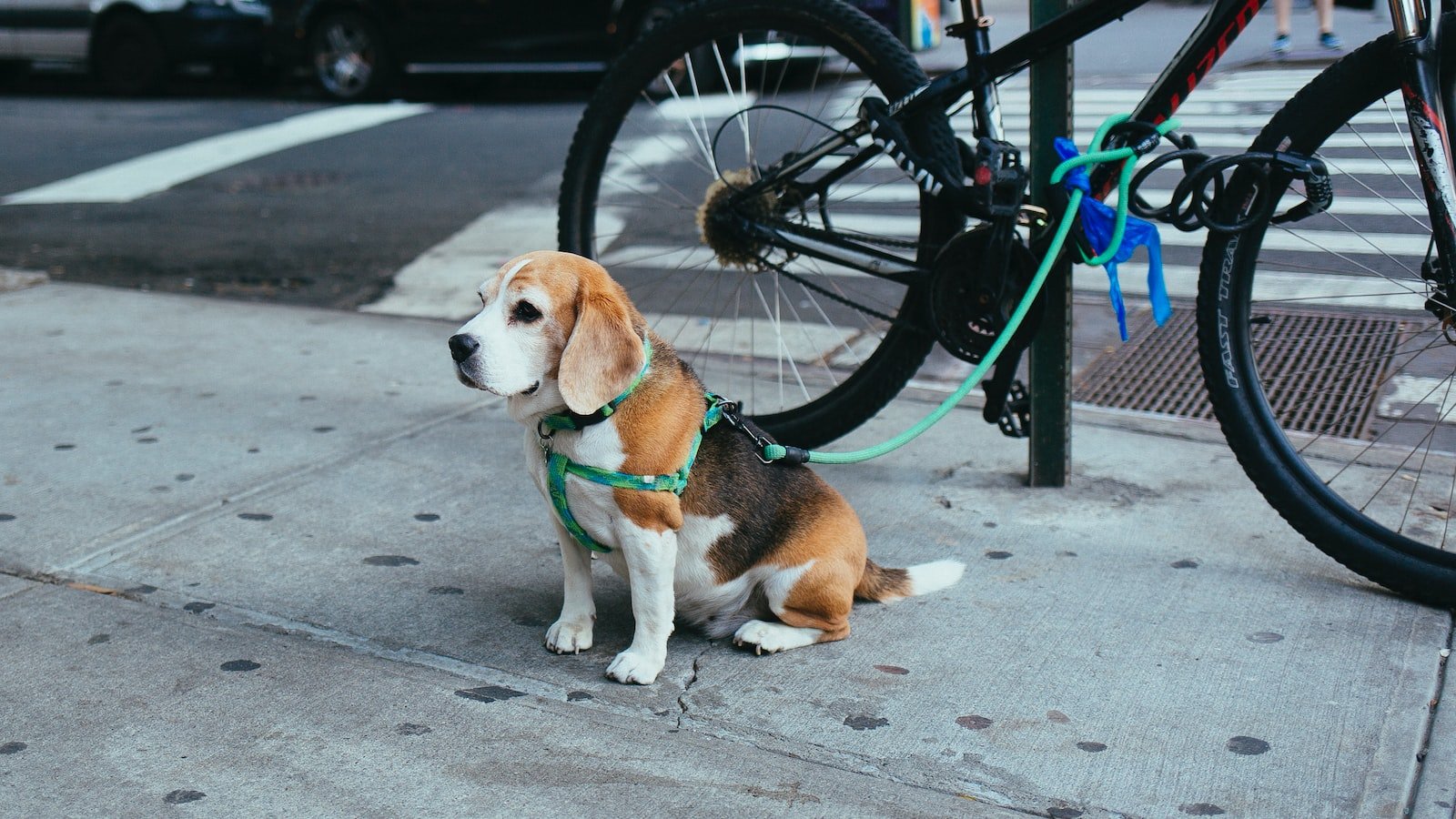As the sun peeks over the horizon, casting a warm golden glow on dew-kissed meadows, a familiar sight emerges – a team of mighty dogs harnessed to a sturdy cart, ready to embark on their daily mission. These four-legged heroes, with their muscles rippling beneath glossy coats, are not just indulging in a picturesque morning stroll; they are engaged in carting, a specialized form of dog training that taps into their innate strength and unwavering loyalty. Pulling their weight – quite literally – these canine companions have found their purpose, serving humanity in ways that go far beyond fetching slippers or entertaining us with their antics. In this article, we will explore the fascinating realm of dog training for carting and uncover the unique bond that develops between these remarkable animals and their human handlers.
Table of Contents
- The History and Purpose of Dog Carting
- The Benefits of Dog Training for Carting
- Training Techniques and Tips for Dog Carting
- Choosing the Right Equipment for Dog Carting
- Safety Measures in Dog Carting Training
- Q&A
- To Conclude

The History and Purpose of Dog Carting
Throughout history, dogs have been our faithful companions, but their capabilities extend beyond mere companionship. Dog carting, also known as draft work, is a fascinating activity that harnesses a dog’s strength and intelligence. It has a rich history dating back hundreds of years, serving both practical and recreational purposes.
Initially, dog carting emerged as a means of transportation in various parts of the world. Dogs were harnessed to carts or sleds, aiding humans in carrying heavy loads over long distances. This enabled individuals and communities to transport goods, supplies, and even people in regions where other forms of transportation were limited or inaccessible. As time passed, dog carting became an integral part of daily life in many cultures, from the rugged Arctic regions to the bustling urban streets.
In addition to its practical applications, dog carting has evolved into a popular sport and recreational activity worldwide. It showcases the impressive strength and agility of dogs while fostering a unique bond between human and canine partners. Today, dog carting is practiced in various forms, including traditional sled dog racing, urban carting where dogs pull carts through streets, and even dog-powered scooter and bikejoring competitions. These activities not only provide dogs with an outlet for their natural instincts but also promote physical fitness and mental stimulation for both dogs and their owners.
Key points:
- Dog carting has a long history, being used as a transportation method in different cultures.
- It has transitioned into a popular recreational activity and sport.
- Various forms of dog carting exist, showcasing the strength and agility of dogs.
- Engaging in dog carting promotes a strong bond between humans and their canine companions.
- It offers both physical exercise and mental stimulation for dogs and their owners alike.

The Benefits of Dog Training for Carting
Dog Carting: The Ultimate Workout for Your Furry Companion
When it comes to keeping your canine companion fit and active, dog training for carting is a fantastic option to consider. Not only does it provide a fun and engaging activity for your dog, but it also offers numerous benefits that go beyond just physical exercise. Let’s explore some of the incredible advantages that dog carting brings to both you and your four-legged friend.
- Strengthens the Bond: Participating in dog carting requires teamwork and cooperation between you and your dog. This activity provides an excellent opportunity for you to establish trust and deepen your bond with your furry friend.
- Builds Endurance and Stamina: Dog carting is a demanding physical activity that helps to improve your dog’s endurance and stamina levels. By regularly engaging in carting training sessions, your canine companion will become stronger and more resilient.
- Mental Stimulation: Carting not only challenges your dog physically, but it also stimulates their mind. The training process helps to enhance their problem-solving skills, concentration, and overall mental agility.
- Teaches Obedience and Discipline: One of the key benefits of dog carting is its ability to instill obedience and discipline in your dog. Through consistent training, your furry pal will learn how to follow commands and stay focused on their task.
By engaging in dog training for carting, you provide your furry friend with a unique and fulfilling experience. Whether your dog joins in for recreational purposes or competes in carting events, the benefits they reap will leave them happier, healthier, and bond stronger with you.

Training Techniques and Tips for Dog Carting
When it comes to dog carting, proper training techniques and tips are vital to ensure a successful and enjoyable experience for both you and your furry companion. Here are some expert suggestions to help you get started:
- Start with basic obedience training: Before introducing your dog to carting, it’s crucial to establish a strong foundation of obedience commands such as sit, stay, and heel. A well-behaved dog will be easier to manage when they are pulling a cart.
- Gradually introduce the cart: Start by getting your dog accustomed to the cart without any pulling. Allow them to investigate and sniff around it, rewarding them for positive behavior. Once they are comfortable, attach the cart to their harness or a special carting harness, making sure it fits properly.
- Teach pulling commands: Introduce specific commands to signal when your dog should start pulling, stop, turn, or slow down. Use consistent verbal cues and hand signals for easy communication. Positive reinforcement in the form of treats or praise can motivate your dog to learn and obey these commands.
- Gradually increase weight: Begin carting with light loads and gradually increase the weight as your dog becomes more confident and physically fit. Always ensure that the weight is evenly distributed and appropriate for your dog’s size and breed.
- Practice regularly: Regular practice sessions are crucial for your dog to build strength, endurance, and confidence. Start with short sessions and gradually increase the duration. Varying the routes and environments will help expose your dog to different situations and challenges.
Remember, dog carting can be a fun bonding activity for you and your furry friend, but safety should always be a top priority. Always consult with a professional trainer or carting expert for additional guidance and support throughout your training journey.

Choosing the Right Equipment for Dog Carting
Equipment Options:
When it comes to dog carting, choosing the right equipment is essential for the safety and comfort of both you and your furry friend. Here are some key factors to consider:
- Cart Type: Start by selecting the appropriate cart type based on your dog’s size, strength, and experience. There are various options available, including two-wheeled carts, four-wheeled carts, and sleds.
- Harness: A well-fitted harness plays a crucial role in distributing the weight and providing stability during carting. Look for a strong, padded harness that allows free movement, but also prevents chafing.
- Shafts: Depending on the cart type, you may need to attach shafts to your harness. These sturdy bars connect the dog to the cart and should be adjustable to ensure a proper fit and balanced movement.
- Tires or Runners: The choice between tires or runners depends on the terrain you plan to navigate. Tires are suitable for urban or paved surfaces, while runners offer better traction on snowy or muddy trails.
- Brakes and Steering: Safety should always be a priority. Choose a cart that comes equipped with reliable brakes and responsive steering mechanisms, allowing you to maintain control and easily maneuver your dog’s cart.
- Reflective Gear: Enhance visibility during low-light conditions by outfitting your cart with reflective gear. This will ensure that you and your dog are visible to others, promoting safety on your carting adventures.
Remember, it’s crucial to properly train your dog and gradually introduce them to pulling a cart. Seek advice from experienced carting enthusiasts or professional trainers to ensure you make the best equipment choices for your dog’s individual needs. So, gear up, embark on exciting carting journeys, and enjoy the unique bond forged between you and your loyal companion.
Safety Measures in Dog Carting Training
When it comes to dog carting training, ensuring the safety of both the dog and the handler is of paramount importance. Here are some essential safety measures to keep in mind during the training process:
- Proper Equipment: Make sure to invest in high-quality, well-fitting harnesses and carting equipment. Inspect the gear regularly to ensure it is in good condition and adjust it correctly to prevent any discomfort or injuries to your furry friend.
- Gradual Conditioning: Just like humans, dogs require a gradual conditioning process. Start with light loads and short distances, gradually increasing the weight and distance over time. This allows your dog to build their strength and endurance without overexertion.
- Veterinary Check-ups: Regular vet check-ups are necessary to assess your dog’s overall health and fitness level before engaging in carting. This ensures that your canine companion is physically capable of handling the activity without any underlying health conditions.
- Sufficient Rest and Hydration: Provide your carting dog with frequent breaks during training sessions to rest and hydrate. Remember, dogs can overheat quickly, so be vigilant and monitor their behavior for signs of fatigue or distress.
- Appropriate Terrain: Choose suitable terrain for training, avoiding overly steep or slippery surfaces. Flat, level ground with good traction is ideal to prevent accidents and injuries during carting sessions.
- Weather Awareness: Keep an eye on the weather conditions before starting a training session. Extreme heat or cold can be dangerous for your dog, so adjust the training schedule accordingly to ensure their well-being.
- Careful Supervision: Never leave your dog unattended while carting, as they may encounter unexpected obstacles or distractions. Stay vigilant, provide clear commands, and actively participate to guide your dog safely throughout the training process.
By adhering to these safety measures, you’ll create a secure and enjoyable environment for both you and your carting dog. Remember, safety first!
Q&A
What is dog carting?
Dog carting is a sport and activity where dogs are trained to pull a cart or a sled. It is a fun way for dogs to engage in physical exercise while developing discipline and teamwork.
What breeds are suitable for carting?
Breeds such as Bernese Mountain Dogs, Siberian Huskies, and Alaskan Malamutes are known for their natural strength and pulling instincts, making them ideal for carting activities. However, any medium to large breed with a desire to work can be trained for carting.
What equipment is needed for carting?
To engage in carting, you will need a specially designed dog cart or a sled, a harness that fits your dog comfortably, and appropriate safety gear like padded boots to protect your dog’s paws.
How do you start training a dog for carting?
Begin by teaching your dog basic obedience commands and ensuring they have good leash manners. Gradually introduce them to the harness and familiarize them with the carting equipment. Start the training process by having them pull light loads and gradually increase the weight as they become more experienced.
What are the benefits of carting for dogs?
Carting provides dogs with physical exercise, mental stimulation, and helps strengthen the bond between the dog and their handler. Additionally, it gives them a job to do, which can boost their confidence and sense of purpose.
What challenges can arise during carting training?
Some challenges during carting training can include teaching the dog proper pulling techniques, maintaining steady control during turns, and ensuring the dog learns to respond to voice commands efficiently. Patience, consistency, and positive reinforcement are key to overcoming these challenges.
Are there any safety precautions to consider while carting?
Yes, safety is crucial during carting. Ensure that the carting equipment is properly fitted and secure. Always start with light loads and gradually increase the weight. Regularly check your dog’s paws for any signs of discomfort or injuries. Finally, provide them with water breaks and never push them beyond their capabilities.
Where can one participate in dog carting events?
Dog carting events can vary from local club gatherings to regional and national competitions. Check with local dog clubs or search online for events in your area. It’s a great way to meet other carting enthusiasts and enjoy the sport together.
To Conclude
As we bring our journey to an end, we can’t help but marvel at the incredible skill, dedication, and pure heart that go into dog training for carting. These four-legged warriors have proved time and time again that they are not just our best friends, but also reliable companions, capable of pulling their weight both figuratively and literally.
From the moment we first harnessed their energy and channeled it towards this ancient practice, we discovered a world of boundless potential. Paws pounding against the ground, muscles taut with determination, our canine partners have become an indispensable part of this timeless tradition.
Through a delicate balance of trust, communication, and mutual respect, we have witnessed the transformation of ordinary dogs into extraordinary forces of strength and reliability. To witness their power as they maneuver through challenging terrain, guiding carts laden with cargo, is nothing short of awe-inspiring.
But beyond the sheer physicality of carting, we have also delved into the deeper connection between handler and dog. In every gentle command, every shared moment of triumph, there lies an unspoken language that fosters an unbreakable bond. This reliance on one another is what sets the carting community apart – it is a testament to our collective dedication to our furry partners.
As dog trainers, we have had the privilege of witnessing remarkable transformations in both dog and handler alike. Frolicking pups become confident captains, while their human counterparts grow into patient and competent leaders. The relationship between dog and cart, once foreign and bewildering, becomes a harmonious duet, each partner moving in sync to achieve a common goal.
So let us bid adieu to this exploration of dog training for carting, knowing full well that the wonders behind this ancient art continue to unfold in the world around us. It is a reminder that amidst the chaos and rapid advancements of our modern age, there are still timeless traditions capable of bringing both fulfillment and purpose.
To all the trainers, handlers, and dogs out there, may your carting journeys be filled with endless adventures, incredible feats of strength, and a bond that withstands the test of time. May your dogs continue to pull their weight, not just in their invaluable contributions, but also in reminding us all of the extraordinary potential that lies within our four-legged companions.
As an affiliate, my content may feature links to products I personally use and recommend. By taking action, like subscribing or making a purchase, you’ll be supporting my work and fueling my taco cravings at the same time. Win-win, right?
Want to read more? Check out our Affiliate Disclosure page.